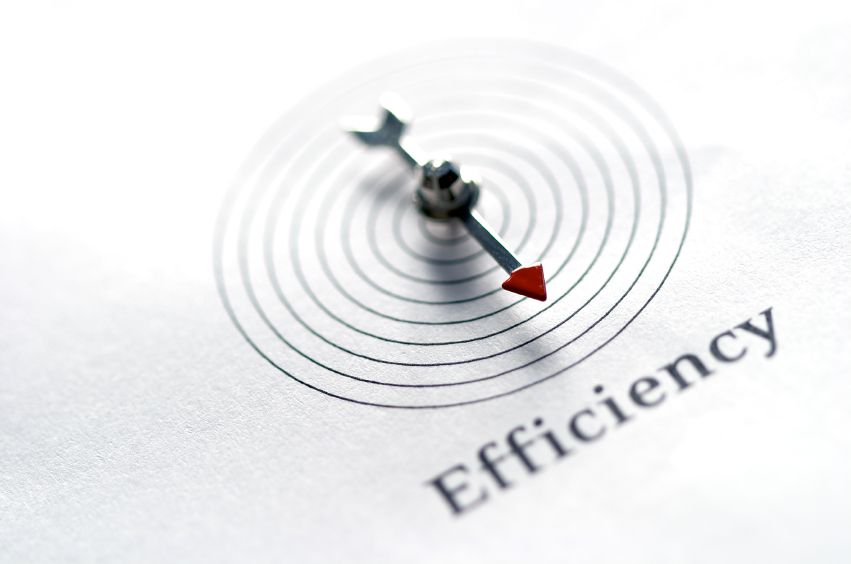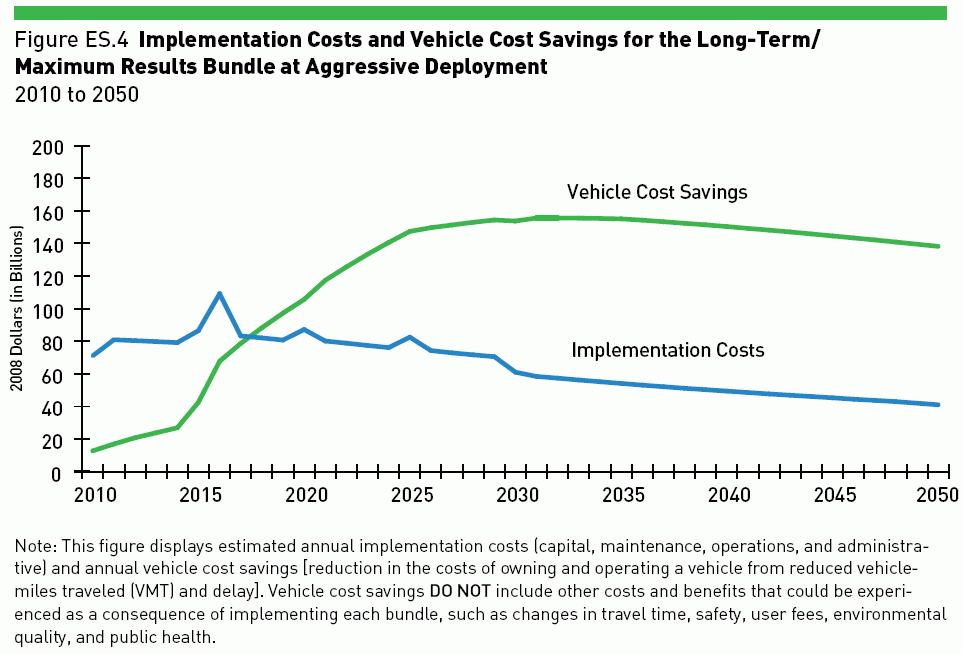Conventional wisdom has it that the effort to reduce greenhouse-gas emissions is going to be long, expensive, and painful for consumers; efficiency can at best defray the costs.
It may not be visible to the casual news consumer, but that climate/energy CW is substantially shaped by economic modeling. I’ve argued in the past that such models systematically overstate the costs and understate the benefits of clean energy and emission reductions. I won’t rehash all those points here (you’re welcome!), but suffice to say, one of the main arguments was that the models consistently underestimate energy efficiency.
Several recent studies examine the potential for energy efficiency to reduce emissions at a negative cost, i.e., a profit, and the results bolster the argument. Importantly, these are ground-up studies, based on history and practice, rather than top-down studies based on economic theories and spreadsheets. From that perspective, the news turns out to be quite good.
“The Positive Economics of Climate Change Policies: What the Historical Evidence Can Tell Us“
Energy efficiency has outperformed expectations again and again, insofar as expectations are set by econometric projections, says Skip Laitner of the American Council for an Energy-Efficient Economy. He took a thorough look at the “economic data and the historical record.” Here’s what he found:
• Energy efficiency investments can provide up to one-half of the needed greenhouse-gas emissions reductions most scientists say are needed between now and the year 2050.
• Investments in more energy-productive technologies can also lead to a substantial net energy bill savings for the consumer and for the nation’s businesses. In the diagnostic assessment summarized in this report, savings are on the order of two trillion dollars by 2050 (measured in constant 2007 dollars).
• Non-energy expenditures within the U.S. tend to be more labor-intensive and provide a greater rate of contribution to the nation’s Gross Domestic Product compared to expenditures on conventional energy supplies. Instead of taking jobs away from the economy, the diagnostic assessment described in this report suggests a small but net positive gain in the economy.
• Hence, shifting away from the production and consumption of conventional energy resources, in favor of more productive investments in energy-efficient technologies, can lead to a more robust economy and to a greater level of overall employment opportunities with the U.S.
How can that energy efficiency potential be unlocked? Funny you should ask.
“Unlocking Energy Efficiency in the U.S. Economy“
McKinsey’s latest study is their most comprehensive assessment of efficiency yet (ably summarized by Joe Romm). Here are their efficiency options, mapped on a cost curve:
The study concludes …
… a holistic approach would yield gross energy savings worth more than $1.2 trillion, well above the $520 billion needed through 2020 for upfront investment in efficiency measures (not including program costs). Such a program is estimated to reduce end-use energy consumption in 2020 by 9.1 quadrillion BTUs, roughly 23 percent of projected demand, potentially abating up to 1.1 gigatons of greenhouse gases annually.
As Joe says, that’s tantamount to saying “the entire 2020 target in the Waxman-Markey climate bill could be met with energy efficiency at a net savings to U.S. consumers and businesses of $700 billion.”
One crucial thing to note about the McKinsey study is that it is only about stationary sources of energy; it doesn’t consider transportation efficiency. Funny you should ask about that.
“Moving Cooler: Transportation Strategies to Reduce Greenhouse Gas Emissions“
At the behest of, among others, the U.S. Department of Transportation, the American Public Transportation Association, NRDC, the EPA, and Shell Oil, Cambridge Systematics has produced a comprehensive accounting of policy options for reducing transportation emissions. The top-line result:
As you can see, the maximally aggressive policy portfolio described by Cambridge could reduce GHG emissions almost 25% by 2050. That portfolio would cost a great deal, but it would save a great deal as well. Savings would exceed costs between 2015 and 2020:
Importantly, the study finds most big emission reductions not in fuel efficiency, but in pricing policies (tolls, congestion fees, pay-per-mile insurance) and land-use changes.
That’s another 11 percent to add to McKinsey’s 2020 reductions, bringing us to 38 percent — well above ACES targets, closing in on IPCC targets, at net positive savings. So much for miserable consumers shivering in the cold.
If we put our minds to it, we have the means and the opportunities to substantially reduce emissions while strengthening the economy. The early push on efficiency will give us much-needed breathing room to scale up new, clean sources. The path we need to follow is clear, and it leads to greater prosperity, health, and sustainability. That is good news.






